Whenever we see pictures or videos of astronauts from the International Space Station (ISS), a common scene comes to our eyes—they float effortlessly. Their hair is standing on end, equipment or food floats in the air. And they fly from one place to another like Superman. The first question that comes to our mind when we see this scene is, Why do they float?
The common and widely held belief is that astronauts on the International Space Station are weightless because of no gravity in spac. Although it sounds logical, this belief is actually a huge mistake. The truth is much more surprising and scientific. The weightlessness that astronauts experience on the International Space Station is not due to the absence of gravity but rather to a special state of gravity called freefall.
In this article, we will learn in detail why astronauts on the International Space Station feel weightless. We’ll break down the misconceptions of gravity, simplify the science of free-fall, and uncover the mysterious world of the incredible changes the human body undergoes in microgravity environments.
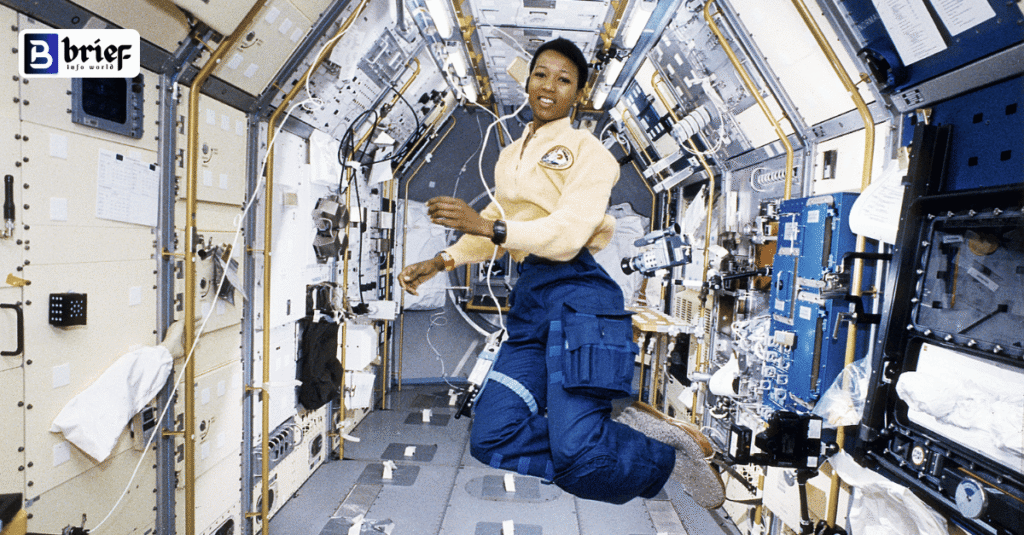
Chapter 1: The Biggest Misconception— “There “is no gravity in space.”
The International Space Station orbits the Earth in an orbit about 400 kilometers (about 250 miles) above our planet’s surface. Many people may think that at such a height, Earth’s gravity may not work. But the reality is that even at this height, Earth’s gravity is about 90% effective.
Let’s give a hypothetical example to make the matter easier to understand. Suppose you could somehow build a ladder 400 kilometers high and climb to the top, would you float? The answer is no. You would rather cling to the ladder with great force and start falling towards Earth at great speed if you miss a step. Because, according to the law of gravity, the force of attraction decreases as the distance between objects increases. But a distance of 400 kilometers is nothing compared to the vastness of the universe. Even if the force of gravity decreases slightly at this distance, it is not worth ignoring.
So the question remains, if the space station has almost the same gravity as Earth, why are astronauts weightless? Why does everything float there? The answer lies in a remarkable combination of speed and gravity.
Chapter 2: The Real Reason—A Never-Ending Fall
The real reason for the weightlessness on the International Space Station is that the station and everything inside it. Astronauts, equipment, even dust particles—are constantly falling toward Earth. This condition is called free fall.
Let’s understand the matter with the example of an elevator
Imagine you are standing inside an elevator and suddenly the elevator cable breaks. The elevator then continues to fall freely downwards. How would you feel at the moments of that fall? As you and your handbag or any other object inside the elevator fall downwards at the same time, you will feel weightless. Your feet will not touch the floor of the elevator. But you and everything around you will continue to float in the elevator—until the elevator hits the ground.
The same thing happens in the case of the International Space Station. It is constantly falling towards the center of the Earth. The astronauts are also falling at the same speed as the station. Since the astronaut and the space station are falling at the same rate. The astronaut’s feet do not exert any pressure on the station’s floor. As a result, he feels no weight and floats.
But why doesn’t the space station hit the Earth?
This is where the second amazing concept in physics comes in—orbital velocity. The space station is not only falling toward the Earth, it is also moving forward at a tremendous speed. Its speed is about 28,000 kilometers per hour (about 17,500 miles per hour).
This tremendous speed is what keeps it from hitting the Earth. To understand this, think of Newton’s cannon.
- If you fire a cannon from a hilltop, the bullet will travel some distance and fall to the ground under the pull of gravity.
- If you fire it with greater force, the bullet will travel even farther.
- Now imagine that you fired the cannon with such great force that when the ball starts to bend downwards due to the pull of gravity. The Earth’s surface also starts to curve downwards. As a result, even though the ball keeps falling, it can never touch the Earth’s surface again. It keeps revolving around the Earth in a fixed orbit.
The International Space Station works on this very principle. Its enormous sideways velocity helps it to keep falling in line with the curvature of the Earth. So even though it keeps falling, it doesn’t hit the Earth but continues to orbit the Earth. And because of this constant fall, everything inside remains weightless.
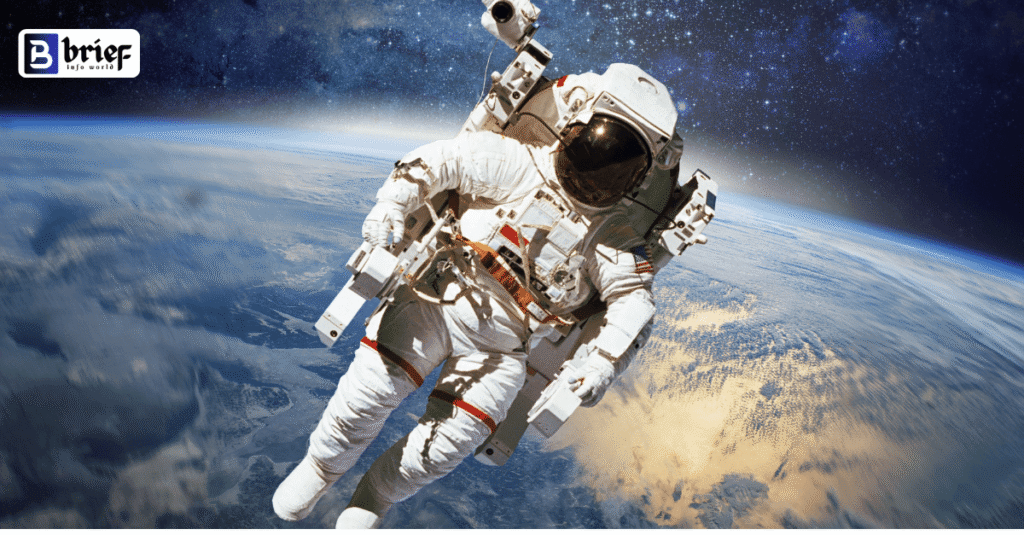
Chapter 3: Not weightlessness; the correct term is microgravity
Although we commonly use the term “weightlessness” or “zero gravity,” scientists use a more accurate term—microgravity.
The word “micro” means “very small.” This is because gravity is not completely zero on the International Space Station. In addition to Earth’s gravity, there is also the weak gravitational pull of the moon, sun, and other planets. In addition, the station’s own equipment causes slight vibrations. Although all this creates a nearly weightless environment. There is a very small (micro) amount of gravity that is effective there.
In the world of microgravity, there is no up or down. If you let go of a pen, it will not fall down but will float in front of you. This environment is as fun as it is challenging for astronauts. Many astronauts suffer from “space adaptation sickness.” Which is similar to motion sickness during their first few days. It takes their brains time to adjust to this new “up and down” environment.
Chapter 4: The Human Body in Space – An Incredible Story of Transformation
Spending a long time in a microgravity environment is a huge challenge for the human body. Our bodies have become accustomed to Earth’s gravity over millions of years. Without gravity, many of our body’s normal processes are disrupted.
1. Fluid Shifts and Puffy Face
On Earth, gravity pulls our blood and other fluids downward, toward our feet. In space, this pull is absent, and about 2 liters of fluid from our bodies moves up toward our chest and head. This gives astronauts a puffy face and narrow legs, jokingly called “bird legs.” This fluid shift increases pressure on the head and many people also experience vision problems.
2. Bone and Muscle Loss
Our bones and muscles stay strong because they constantly have to work against gravity. Our muscles and skeleton carry the weight of the body even when we walk, run, or simply stand.
In microgravity, this stress is not there. As a result, the body thinks that these bones and muscles are no longer needed. As a result, they start to deteriorate very quickly. Studies have shown that astronauts in space can lose about 1-2% of their bone density every month. Muscles also become weak.
To prevent this serious deterioration, astronauts on the International Space Station have to exercise for about 2 to 2.5 hours a day. They have special treadmills (where you have to hold yourself with a harness), resistance machines and stationary bikes. This exercise helps keep their bones and muscles healthy for returning to Earth.
3. Height Increase and Other Changes
Without the pressure of gravity, the vertebrae of the spine expand slightly. As a result, astronauts temporarily grow 1 to 2 inches taller in space. After returning to Earth, they return to their previous height due to the pressure of gravity. Also, the heart may become slightly smaller in size because it no longer has to pump blood against gravity.
4. Mental health challenges
Along with the physical challenges, there are also mental challenges. Being isolated from billions of people around the world in a small, confined space for months on end is mentally difficult. Boredom, loneliness, and the stress of being away from family take their toll on astronauts. That is why special importance is given to their mental toughness and ability to work as a team during the selection of astronauts. They are provided with regular psychological support from the control center on Earth.
Chapter 5: A Typical Day on the International Space Station
Daily life in a microgravity environment is completely different from that on Earth.
- Sleep: Astronauts sleep inside sleeping bags attached to the wall. They tie the sleeping bag tightly to prevent themselves from floating away.
- Food and Drink: Food is specially prepared and packaged (mostly dehydrated or thermo-stabilized). Care must be taken when eating to avoid small particles floating in the air. As they can get into electrical equipment and cause major problems. Salt and pepper are used in liquid form.
- Cleanliness: There is no way to shower with water, as the water droplets will float away. Astronauts clean their bodies with “no-rinse” shampoo and wet towels. The toilet is also specially designed, using air suction to collect waste.
Chapter 6: Return to Earth—Reacquaintance with Gravity
Returning to Earth after spending months or a year in space is also a big challenge. When astronauts return to Earth, their bodies have to reacquaint themselves with gravity.
Their first feeling is a heavy load. Even their own heads feel very heavy. It becomes difficult to move their arms or legs. They feel dizzy when they try to stand up. Their bodies are so weak that they often have to be carried out of the capsule.
Then the rehabilitation process begins. They gradually regain their bone and muscle strength by exercising under the supervision of physiotherapists. Some ordinary things in the world. Such things as the smell of rain, the sound of leaves in the wind, or the feeling of touching a loved one seem extraordinary to them.
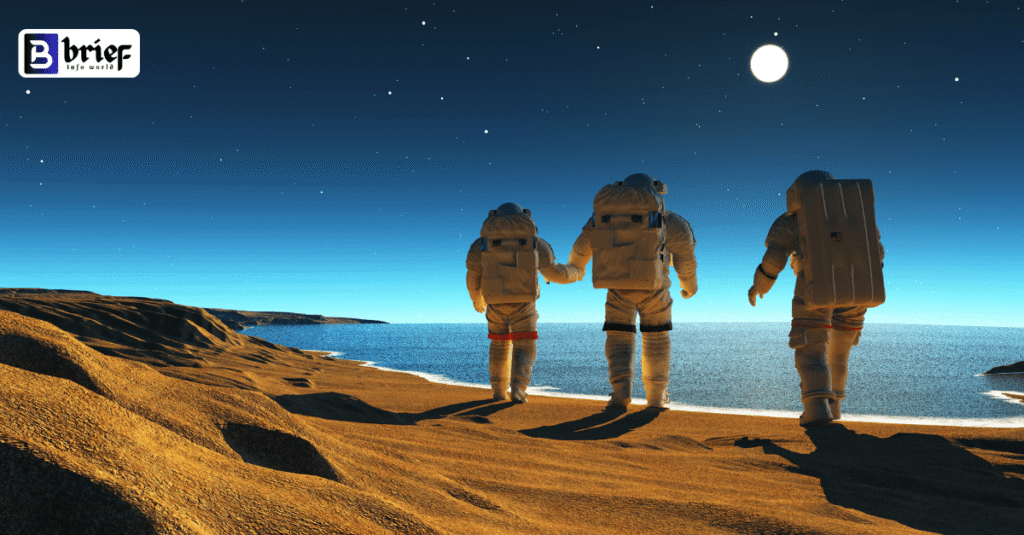
Astronauts on the International Space Station Are Weightless Because: Frequently Asked Questions (FAQ)
Question: Is gravity really zero on the International Space Station?
Answer: No, it is not zero. At an altitude of 400 km above Earth, Earth’s gravity is about 90% of that on Earth. Astronauts feel weightless because they and the space station are constantly in freefall around the Earth.
Question: Do astronauts actually float?
Answer: Yes, they float relative to their spacecraft. Because they and the spacecraft are falling towards Earth at the same speed and rate, which creates a feeling of relative weightlessness in them.
Question: What happens to astronauts when they spend a long time in microgravity?
Answer: Astronauts experience major changes in their bodies when they spend a long time in microgravity. The main ones are loss of bone density, muscle weakness, fluid displacement, and changes in the structure of the heart. They have to exercise hard to reduce these losses.
Question: How do astronauts feel after returning from space?
Answer: Astronauts feel extremely heavy after returning to Earth. Their bodies are very weak and it takes them a while to adjust to gravity. They may experience problems such as dizziness, difficulty maintaining balance, and muscle pain.
Question: What is day and night like on the International Space Station?
Answer: The space station orbits the Earth once every 90 minutes. As a result, astronauts see 16 sunrises and 16 sunsets every 24 hours. They follow a specific time zone (usually Coordinated Universal Time or UTC) to keep their work schedule and sleep cycle in check.
Final Thoughts
So, the next time you see an astronaut floating in space, remember that they are not escaping gravity. Rather, they are participating in a remarkable dance of physics—a constant fall that helps them orbit the Earth. This feeling of weightlessness is a living symbol of human curiosity and the thirst for knowledge. It reminds us of how amazing the laws of the universe are and how much we can accomplish by harnessing those laws.

Hi, I’m M Saif, a digital marketer with a strong focus on SEO and content writing. I help businesses improve their online visibility, drive organic traffic, and create engaging content that converts. With a results-driven approach, I work on strategies that not only boost rankings but also deliver real value to audiences.


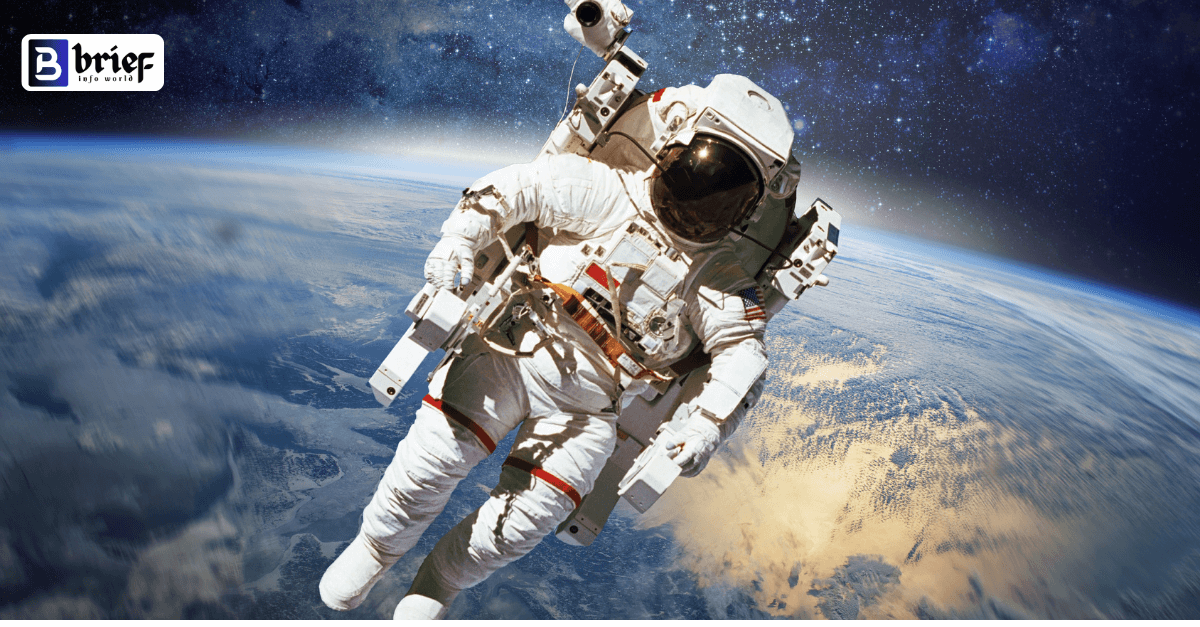






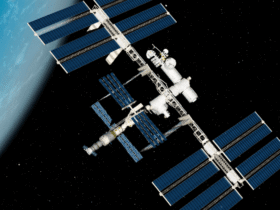
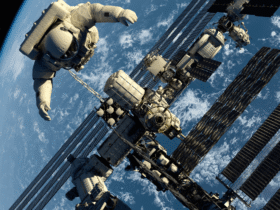
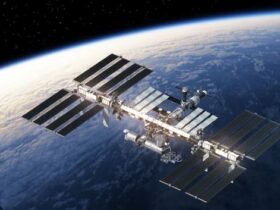
Leave a Reply